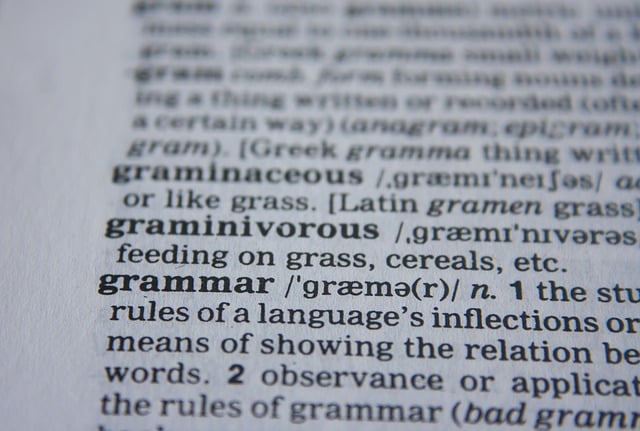You're Grammar

Is there something wrong with the title of this post?
Yes and no.
*SHUDDER*
Okay: I’ll admit that the headline was intended to spark clicks and perhaps some comments. But let’s take a closer look. The brains of most people (especially those of any English teachers subscribed to our blog) probably went into red alert mode after reading it; most readers would have expected “Your Grammar”, as in “the grammar that belongs to you”. Instead, I decided to be cute with my title by using a phrase whose expected meaning is flipped into something that comes off as flat out wrong, but is actually a perfectly grammatical declaration: you are grammar. You are the grammar you use.
PASSING JUDGMENT, AND A CHALLENGE FOR YOU
In the professional world, people are judged by the writing skills they exhibit in their digital communications. Admit it: whenever you receive an email containing cringe-worthy grammar, usage, and structural errors, your internal intellectual snark comes to the fore. It only makes sense that the SAT and ACT––exams that are meant to gauge student preparedness for college––heavily emphasize grammar like the your/you’re distinction, in addition to other common writing pitfalls; after all, most college students will eventually find themselves in professional settings, where things like this can matter much more than a firm handshake and a great smile.
In the spirit of making sure today’s future professionals don’t join the ranks of the ungrammatical or illogical, I pose a challenge. The following paragraph will contain 10 errors of grammar, structure, and usage tested on the SAT and ACT, but without the typical underlines and multiple choice options to guide your scrutiny. Share it with your colleagues and students, and use the comments section below to (1) enumerate the errors and (2) offer corrections. The prize? Satisfaction that the students in your life will be that much more prepared for the SAT, the ACT, and the professional world beyond.
YOUR CHALLENGE PARAGRAPH
A relative recent political phenomenon, United States Senators are elected directly by the people. Prior to the 20th century, US Senators were elected “indirectly”, chosen not by each states’ citizens themselves, but by the elected members of each state legislature. This system led to several political quagmires. First, it was highly corrupt, senate candidates would sometimes bribe state legislators, whom, in a time that lacked the constantly vigilant eyes of today’s internet watchdogs and tweeting journalists, could be bought without public detection. In contrast, it led to political gridlock that could leave the US Senate with their seats vacant for weeks on end: if the politicians in a given state legislature could not agree to support the same candidate, no senator would be sent to the capital, and the state would remain unrepresented on the federal level. The issues became significant enough to necessitate change, which would come in the form of the Seventeenth Amendment to the United States Constitution. Many political observers, however believe that this change simply replaced old problems with new ones, and that to make the system even more equatable, we ought to change the very method of election itself.


